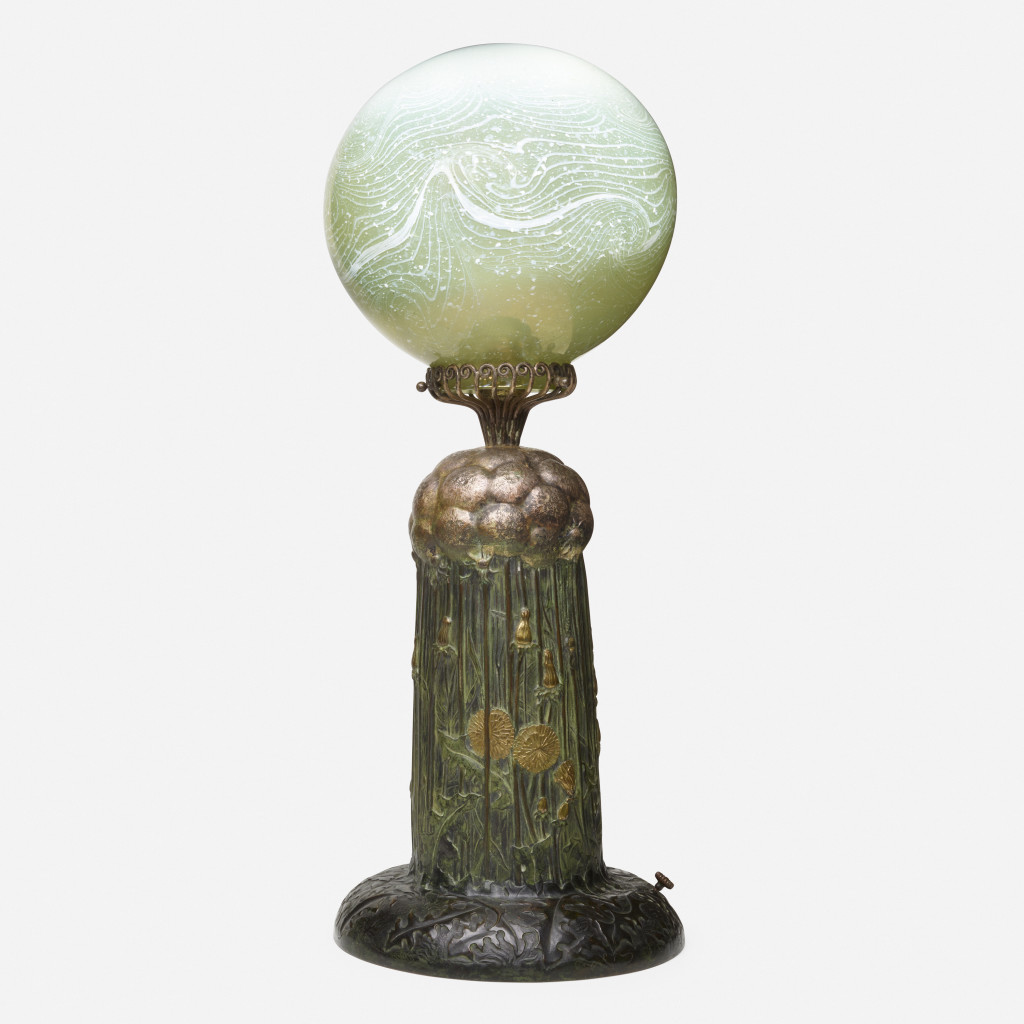By Greg Smith
LAMBERTVILLE, N.J.— A Dandelion lamp made by Tiffany Studios for the 1900 Exposition Universelle in Paris sold for $3,745,000 at Rago on May 13, setting an auction record for any work by the maker. The 29½-inch lamp featured a hand-blown favrile glass globe-form shade on top of a hammered and patinated copper base. The spectacular imagery of the lamp depicts the growth cycle of a dandelion, the yellow flower rising from the base’s bottom up to its top, where it features a crown of seed puffs. The globe on top features a contour pattern similar to a topographic map, intended to represent the wind currents blowing through and sweeping the seeds away.
The work was purchased by a private buyer with interest from other collectors, trade and institutions. The firm had 11 bidders on the phone for the lamp.
Tiffany was so fond of the lamp that he wanted it exhibited stateside as well, showing it at the 1901 Pan-American Exposition in Buffalo, N.Y.
The lamp surfaced in a Virginia estate, auctioneer David Rago said. “After the Buffalo Exposition, it disappeared for 125 years,” he said. “Two and a half months ago, we were notified that it was in an estate in Virginia. The father was an antiquer and the family remembers growing up with this lamp, it had been there since the 50s.”
Rago said the family had been politically connected through a diplomatic role, but the whereabouts of the lamp between 1901 and 1950 are unknown.
Martin Eidelberg, who wrote the catalog essay for the auction house, said that the lamp was created specifically for the World’s Fair. On the coloring of the base, he wrote, “Although often described as being enameled, there are no enamels. Instead, its rich harmony of colors was attained in a very different way. The green that covers the plants come from oxidizing the copper. The dark brown base resembles a rich bronze, but it too is copper, covered with a different patina. The golden dandelion blossoms seem to be made from thin strips of brass soldered in place. And the ring of puff balls that encircle the top of the shaft have been coated with silver or another white metal. Not only is the lamp a tour-de-force of metal working, but it is remarkable that the surface is in such pristine shape, undoubtedly the result of its having been hidden away for over a century.”
The designer behind the Dandelion lamp is believed to be Clara Driscoll, who was heavily inspired by natural forms in her other lamp designs for Tiffany.
Two other Dandelion lamps are known, according to Rago, including a smaller version that surfaced years ago and another similar example with minor changes — whereabouts unknown — that was featured in a 1900 article in Brush and Pencil.
The work handily beat its $50/70,000 high estimate. “Every time we have gotten a huge price for something,” Rago said, “It’s with a really low estimate on a fresh piece that’s not covered with a high reserve.”
Price includes buyer’s premium. For more information, www.ragoarts.com or 609-397-9374.





